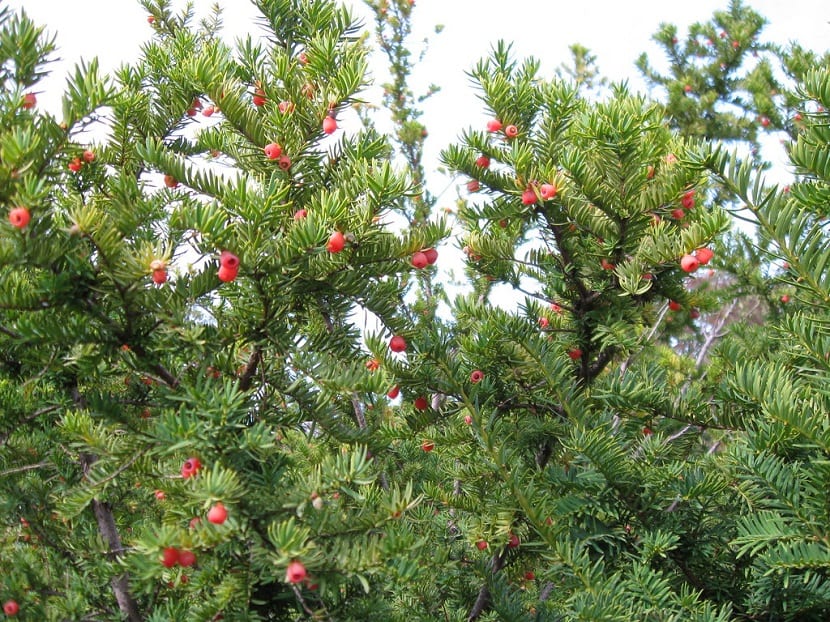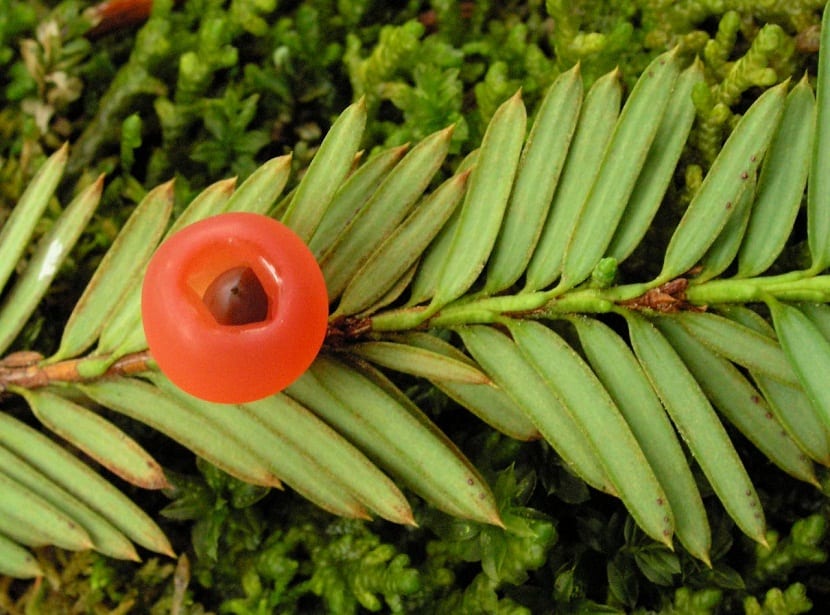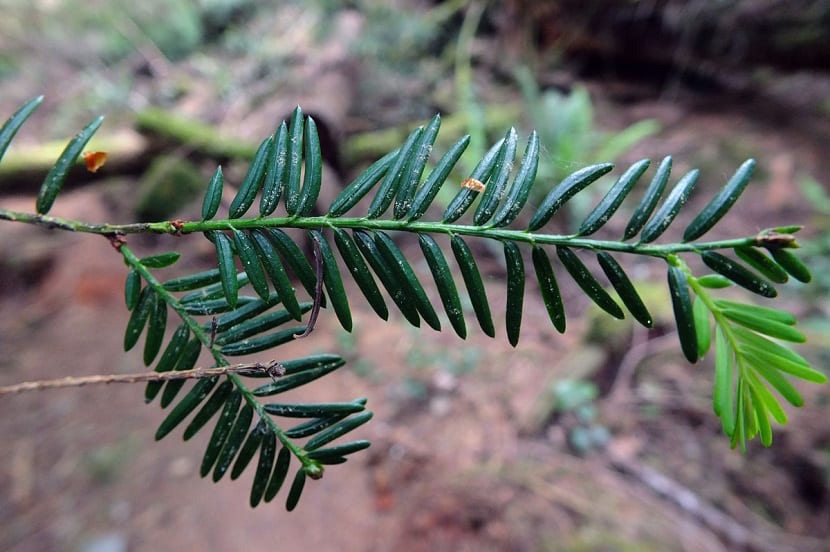
El Taxus brevifolia is a coniferous shrub that belongs to the family taxaceae, also known by the name of Tejo del Pacífico. It is a medium-sized plant that can exceed 20 meters in height.; it is also quite long-lived. It is the only commercially important yew in North America, thanks to the fact that a compound used in some types of cancer is extracted from its bark.
Origin and habitat

The Pacific yew is a species native to North America, it can be seen in the wild in regions such as the Pacific coast of southeast Alaska, south of the United States of North America to the west side of British Columbia to the state of California It is also present in the states of Montana, Idaho and Oregon. It grows at heights ranging from 0 to 2200 meters above sea levelIn both open and thick forest, it spreads along streams, wet plains, and slopes.
Characteristics of the Taxus brevifolia
It is an evergreen tree that has an average growth of between 5 and 15 meters in height, however specimens that exceed 20 meters are known. The trunk is erect a little twisted, its striated bark has reddish scales that turn purple, its branches go from ascending to falling. Its shoots are green and totally surrounded by decurrent leaf bases.
It has green, linear, subtle, flexible leaves, usually falcate, with a somewhat narrow median crest on its upper surface and stomata in two yellowish green bands of 5 to 8 lines on its underside, whorled with a short petiole and a leaf base incurrent. It has pollen cones both solitary and in groups. Its seeds are ovoid and mature in late summer. The wood of this species is strong and heavy.
Important data
It is a species of extremely slow growth, which grows at the rate of 20 centimeters per year, so it often tends to rot from the inside, forming hollow spaces inside. This makes it difficult to count their rings, so the actual age of the specimens cannot be determined. Its slow growth causes that the colonization of the Taxus is also slow, even in those places with appropriate conditions.
Studies related to their recovery after felling and the data collected on trees marked in the stands, confirm the hypothesis that although it is an expanded species, it is eminently of late succession. It is very sensitive to fire and its recovery is slow. This plant achieves the maximum basal area and the density of adult stems in the so-called old forests.
Uses
The native peoples of the Pacific coast of North America gave significant importance to the wood of the Taxus for its resistance, which they used to make weapons and other implements. At present it is used in the elaboration of musical instruments such as the lute and other string instruments.. There are those who still prefer its wood to make bows, in Japan it is used to make ceremonial toko poles.
In the early XNUMXs, researchers were able to identify a chemical compound in Taxus brevifolia called paclitaxel. Later the same was approved to treat ovarian cancer and certain carcinomas in animals, today it is sold under the trade name Taxol. Its use has also been accepted in the treatment of an AIDS-related cancer.
Diseases and pests

In general the species belonging to the family taxaceaeThey are very resistant and not prone to many diseases and pests. However, the presence of various stressors can cause them to turn brown.
The fungus present in Taxus protects it from diseases and predators, but if the place becomes very dry then that same fungus can become a disease for the plant. Another aspect that usually affects the species is indiscriminate logging, which makes the soil more exposed to the sun and wind, which causes the soil to become drier.